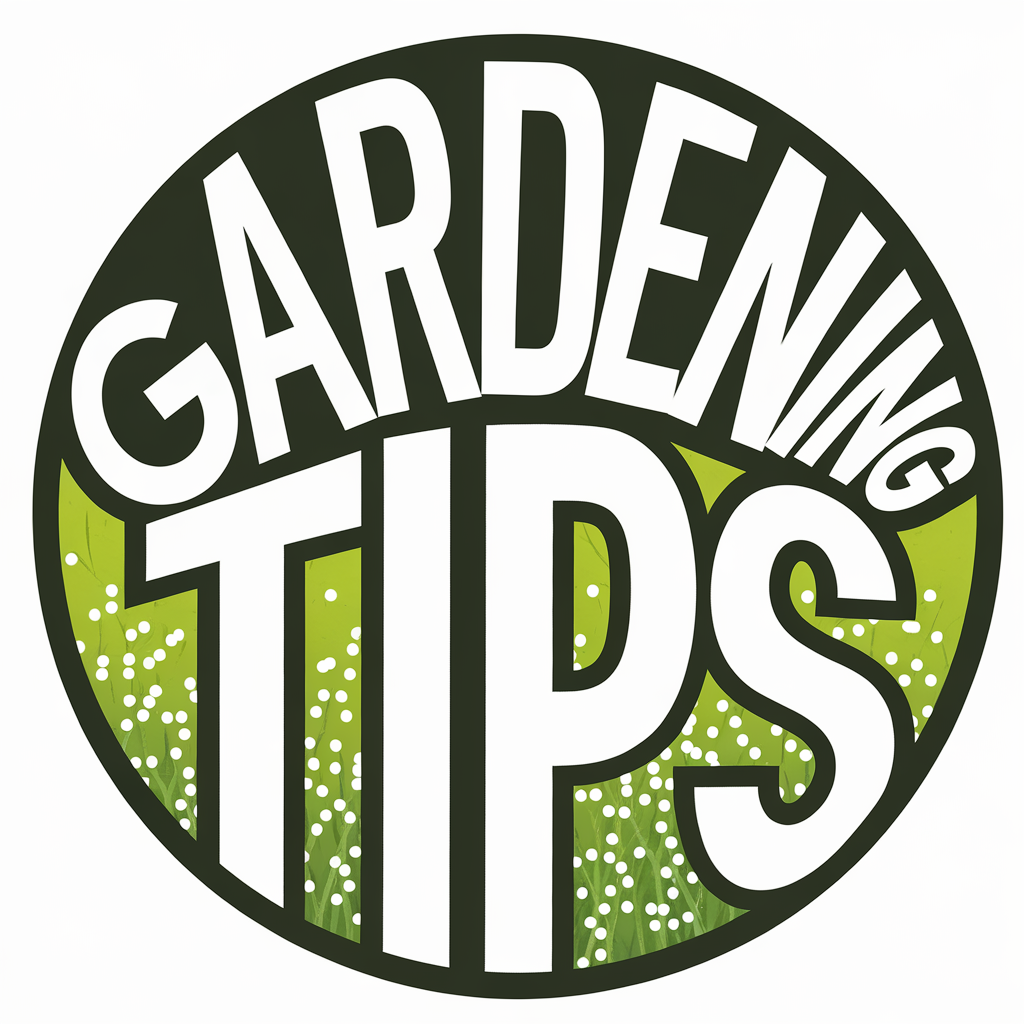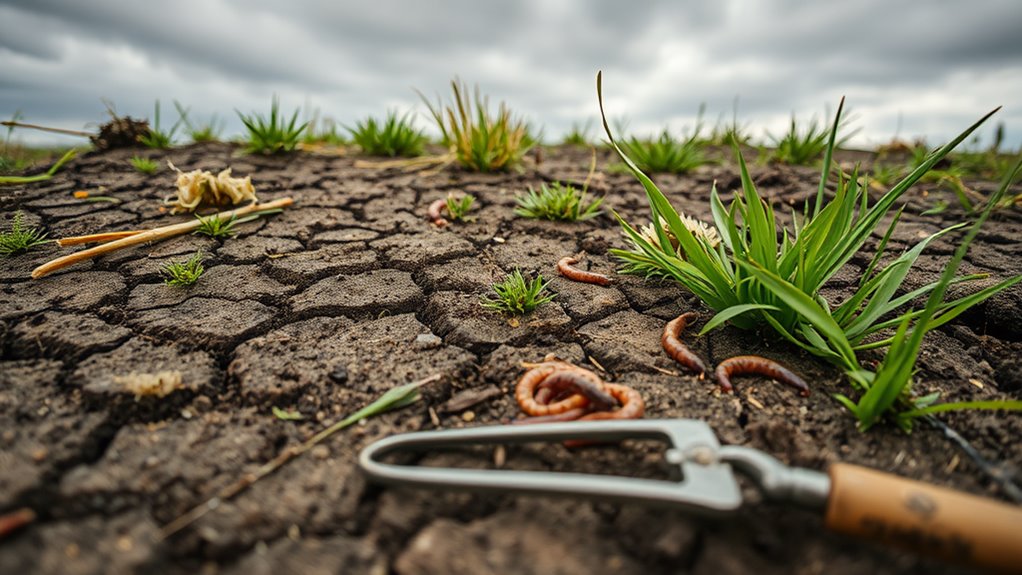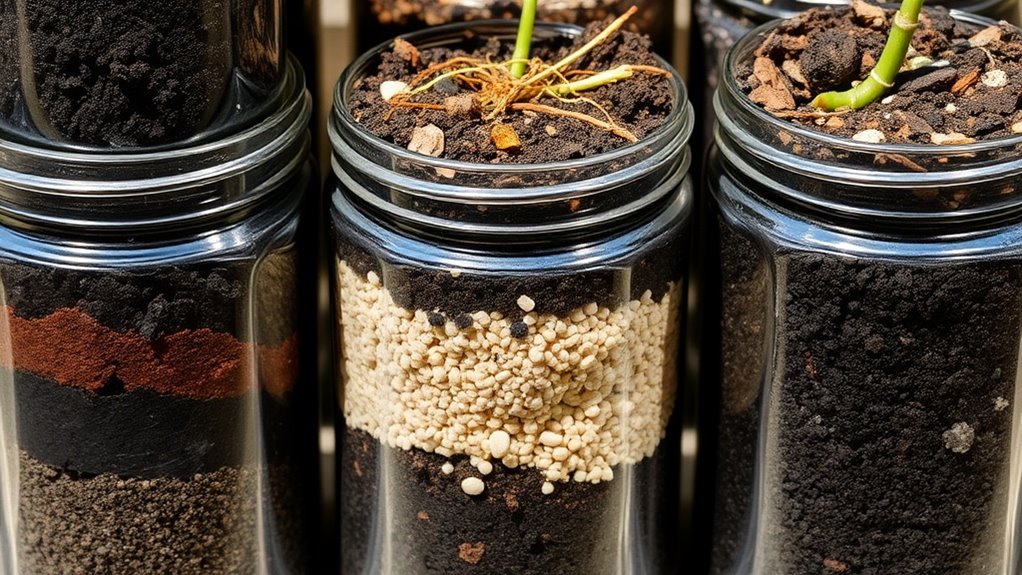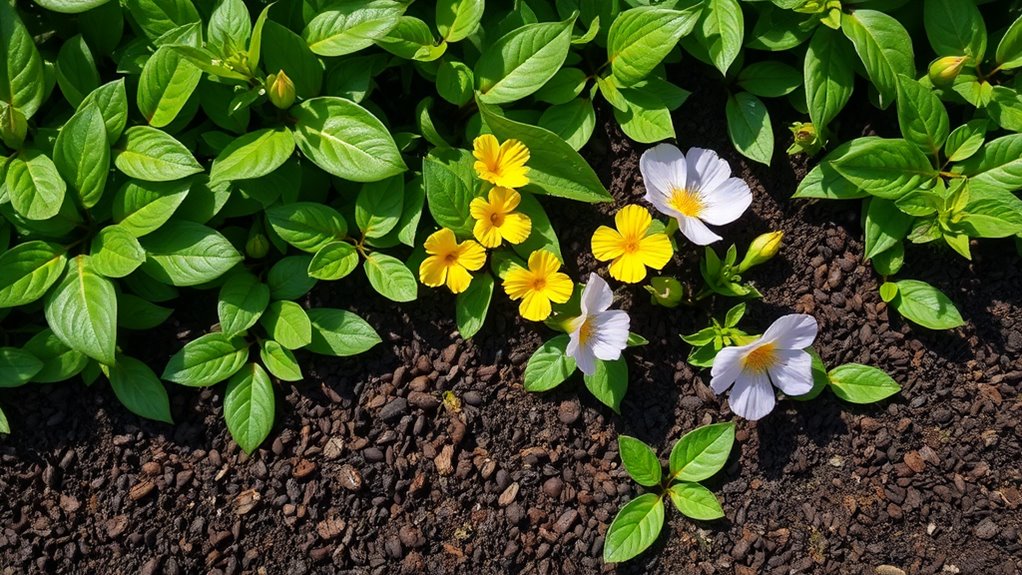Don’t Ignore These Signs of Poor Soil Health
Don’t ignore signs of poor soil health, like yellowing leaves or stunted growth. These issues can indicate nutrient deficiencies and soil compaction, limiting water absorption and root development. Pests and diseases thrive in weakened plants, and foul odors often signal anaerobic conditions. You might also notice fewer earthworms, which are essential for soil vitality. Each of these signs impacts your plants’ resilience and overall health. There’s more to uncover about maintaining robust soil conditions.
Discoloration of Plant Leaves
When plants display discoloration in their leaves, it often signals underlying soil health issues.
Yellowing leaves might indicate nutrient deficiencies, particularly nitrogen, while browning edges could suggest overwatering or poor drainage.
If you notice spots, it may point to root rot or fungal infections linked to unhealthy soil.
Each discoloration type serves as a visual cue, urging you to assess your soil’s condition.
Check pH levels, organic matter, and microbial activity, as these factors greatly influence soil health. Additionally, understanding soil health indicators can help you make informed decisions about necessary amendments and care for your garden.
Addressing these imbalances promptly can restore the vibrancy of your plants, ensuring they thrive in a supportive environment.
Stunted Plant Growth
Stunted plant growth often signals underlying soil health issues that you can’t afford to ignore.
You might notice nutrient deficiency indicators, which affect overall vigor, alongside poor root development that restricts access to essential resources.
Additionally, soil compaction can hinder root expansion, further exacerbating growth problems and limiting your plants’ potential. Conducting a soil test can help identify specific nutrient deficiencies and inform necessary amendments to improve soil health.
Nutrient Deficiency Indicators
Healthy plants rely on a balanced supply of nutrients to thrive, and a visible sign of nutrient deficiency is often stunted growth.
If you notice this issue, consider evaluating the following indicators:
- Yellowing Leaves: A sign of nitrogen deficiency, leading to reduced chlorophyll production.
- Poor Leaf Size: Smaller than normal leaves may indicate a lack of essential nutrients like potassium.
- Abnormal Leaf Shapes: Distorted or curled leaves can suggest magnesium deficiency.
- Delayed Flowering: If your plants bloom late or not at all, they might be missing essential nutrients.
Address these signs promptly to restore healthy growth.
Poor Root Development
Nutrient deficiencies can lead to poor root development, which directly impacts plant growth and overall vigor.
When roots can’t access essential nutrients like nitrogen, phosphorus, or potassium, they become stunted, limiting their ability to absorb water and nutrients.
This lack of development often manifests as yellowing leaves or poor fruit production.
Additionally, poor root systems are less resilient to environmental stressors, making plants more susceptible to diseases and pests.
To promote healthy root growth, regularly test your soil and amend it with organic matter or fertilizers as needed.
Addressing nutrient issues promptly can greatly enhance plant health and productivity.
Soil Compaction Issues
Soil compaction is a significant barrier to ideal plant growth, as it restricts root expansion and limits access to air and water.
When soil becomes compacted, you’ll notice stunted growth in your plants.
To identify soil compaction issues, watch for these signs:
- Reduced germination rates in seeds.
- Wilting or yellowing leaves despite adequate watering.
- Difficulty in tilling or digging the soil.
- Increased runoff during rain, leading to erosion.
Addressing compaction can restore soil health, improve water infiltration, and promote robust plant development.
Regularly aerating your soil helps alleviate these issues.
Poor Water Drainage
When your garden or landscape struggles with poor water drainage, it can signal underlying issues that threaten plant health.
Waterlogged soil can suffocate roots, leading to stunted growth and increased susceptibility to disease. You might notice puddles lingering after rain or a soggy texture when you dig.
This often results from compacted soil, heavy clay, or improper grading.
To remedy this, consider incorporating organic matter to improve soil structure and promote drainage. Additionally, installing drainage systems or creating raised beds can help excess water escape, ensuring your plants receive the right amount of moisture for ideal health. It’s also important to be mindful of overwatering mistakes, as they can exacerbate drainage issues and negatively impact your plants.
Presence of Pests and Diseases
Have you noticed an increase in pests or diseases affecting your garden?
This can be a clear sign of poor soil health.
Healthy soil supports beneficial organisms that keep pests at bay and enhance plant resilience. When these pests or diseases become prevalent, consider these factors:
- Nutrient Imbalance: Poor soil fertility can weaken plants, making them more susceptible.
- Compacted Soil: This limits root growth and water penetration, stressing plants.
- Monoculture Practices: Growing the same crops can attract specific pests.
- Lack of Diversity: A diverse ecosystem promotes natural pest control.
Additionally, incorporating companion planting techniques can help deter pests and improve overall plant health. Addressing these issues is essential for restoring soil health.
Unpleasant Odors
What’s that unpleasant smell wafting through your garden? If you detect a foul odor, it’s often a sign of poor soil health. This can indicate issues like anaerobic decomposition, where organic matter breaks down without oxygen, producing harmful gases. Addressing these odors can improve your garden’s ecosystem. Maintaining healthy soil is crucial for effective composting and nutrient absorption.
| Potential Cause | Suggested Action |
|---|---|
| Anaerobic conditions | Aerate the soil |
| Excessive organic matter | Reduce organic matter input |
| Contaminated soil | Test and amend the soil |
| High moisture levels | Improve drainage |
Identify the source and act quickly to restore your soil’s health.
Soil Compaction
Soil compaction occurs when soil particles are pressed together, often due to heavy machinery or foot traffic.
This condition can greatly hinder plant growth by reducing root penetration and water infiltration. To combat this issue, understanding its causes and implementing effective prevention and solutions is essential. Additionally, proper soil preparation techniques can help improve soil structure and alleviate compaction issues.
Causes of Soil Compaction
Compaction in soil occurs primarily due to various human activities and environmental conditions that compress the soil particles, reducing pore space.
Understanding these causes can help you manage soil health effectively.
Here are four common causes of soil compaction:
- Heavy Machinery: Use of tractors and construction equipment can crush soil particles.
- Frequent Foot Traffic: Repeated walking or movement in the same areas compresses the soil.
- Overgrazing: Livestock can compact soil through constant pressure.
- Wet Conditions: Saturated soil is more susceptible to compression, especially under weight.
Recognizing these factors allows you to take preventive measures.
Effects on Plant Growth
The impact of compaction on plant growth is significant, as it directly affects root development, water infiltration, and nutrient availability. Compacted soil restricts roots from accessing essential elements, leading to stunted growth and poor plant health. Here’s a quick overview of how compaction influences various aspects of plant growth:
| Aspect | Impact |
|---|---|
| Root Development | Limited expansion |
| Water Infiltration | Decreased absorption |
| Nutrient Availability | Restricted access |
| Plant Stability | Increased vulnerability |
| Overall Health | Reduced vigor |
Understanding these effects is essential for recognizing poor soil health.
Prevention and Solutions
While preventing soil compaction requires proactive measures, implementing effective solutions can greatly enhance soil health and promote robust plant growth.
Here are four strategies you can adopt:
- Regularly Aerate: Use a core aerator to relieve compaction and improve air and water movement.
- Limit Traffic: Reduce foot and vehicle traffic on soil, especially when wet, to prevent further compaction.
- Add Organic Matter: Incorporate compost or mulch to improve soil structure and enhance microbial activity.
- Practice Crop Rotation: Diversifying crops helps maintain soil structure and reduces compaction risks.
Low Earthworm Activity
How can you tell if your soil is struggling? One key indicator is low earthworm activity.
Earthworms play an essential role in soil health by aerating, enriching, and improving drainage. If you rarely see these beneficial creatures, your soil might be compacted, overly acidic, or lacking organic matter.
To assess their presence, dig a small sample of soil and look for worms. If you find fewer than three worms per shovel full, it’s a sign your soil needs attention. Consider adding organic materials like compost or mulch to restore balance and encourage earthworm populations, enhancing overall soil vitality. Backyard solutions can further boost your soil’s health naturally.





